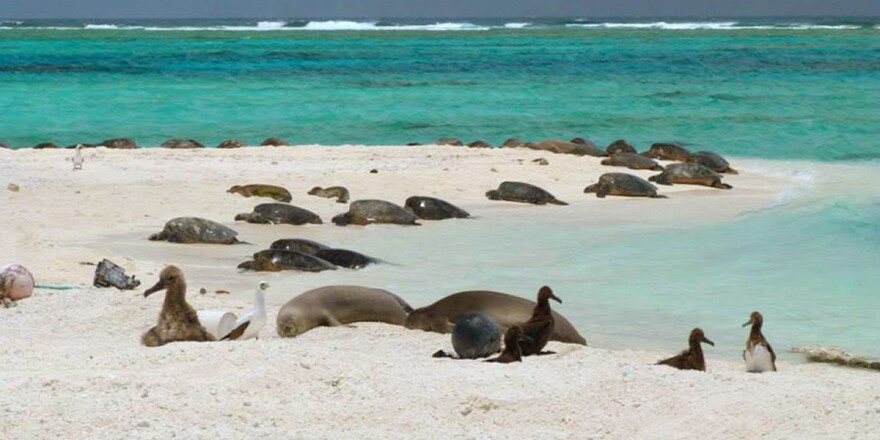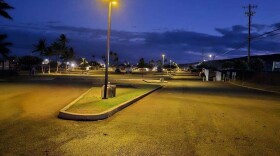This year marks the 50th anniversary of America’s National Marine Sanctuary System.
Two of the 17 federally protected masses of water are located in Hawaiʻi — Papahānaumokuākea Marine National Monument and the Hawaiian Islands Humpback Whale National Marine Sanctuary.
In response to several environmental disasters including the 1969 Santa Barbara oil spill, Congress passed the Marine Protection, Research and Sanctuaries Act in October 1972 — creating the National Marine Sanctuary System under NOAA.

"Prior to 1972, there were not any significant marine life protections in place. Today we have a total of 15 national marine sanctuaries and two marine national monuments," said Eric Roberts, acting superintendent for Papahānaumokuākea.
Sanctuaries are created under the National Marine Sanctuaries Act, and monuments are created under a presidential proclamation.
There are some typical rules in almost all of the protected areas. For example, disturbing the seafloor and extracting minerals and oil are outlawed.
But for either sanctuaries or monuments, there are no universal rules for the protected areas.
"So each sanctuary is unique in terms of what protections are in place, and that’s very specific to the resources that that particular sanctuary is protecting — whether it’s historical resources like Monitor where you have shipwrecks, or biological resources like Florida Keys, as well as Papahānaumokuākea where we have significant cultural resources," Roberts said.
The Northwestern Hawaiian Islands joined the national protective system under the Bush administration in 2006
In 2007, the name changed from Northwestern Hawaiian Islands Marine National Monument to Papahānaumokuākea Marine National Monument in recognition of two Hawaiian ancestors – Papahānaumoku and Wākea.

In 2016, the Obama administration expanded the protected area to 583,000 square miles from 140,000 square miles. It’s the largest conservation zone in the country — greater than all of the national parks combined.
The Northwestern Hawaiian Islands are considered sacred by Native Hawaiians.
In recent years, Papahānaumokuākea became a no-fishing zone and a safe haven for marine animals including the endangered Hawaiian monk seals and types of ahi.

Another Hawaiʻi sanctuary has helped increase the population of another endangered species.
"The sanctuary was basically established to protect humpback whales while they’re in the Hawaiian Islands. And they migrate from Alaska to Hawaiʻi every winter to have their babies and raise their babies and mate," said Kim Hum, superintendent of the Hawaiian Islands Humpback Whale National Marine Sanctuary.
Prior to the establishment of the whale sanctuary in 1992, only about 3,000 humpbacks would migrate to Hawaiʻi.
The Hawaiʻi humpback whale population was taken off of the U.S. endangered species list in 2016 when more than 10,000 whales visited the Hawaiian Islands.





